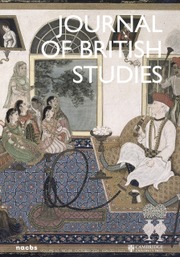This book is an essential read for anyone researching the late Middle Ages in Ireland. Sparky Booker has provided a clear and accessible overview of English and Gaelic interaction from the “four obedient shires.” This region, which Booker defines by English lordship rather than by political loyalties, roughly coincided with the modern counties of Louth, Meath, Dublin, and Kildare but also included eastern parts of Westmeath and underwent some fluctuation in boundaries over time. These four shires were the most Anglicized areas of Ireland in the later Middle Ages, but as Booker shows, Gaelic language and culture permeated all levels of society by 1500.
This study builds on a historiographic trend in recent years that has drawn attention to cross-cultural contact and acculturation between the English and the Irish. However, this is not a rosy picture of coexistence. The success of a minority of Irish people in reaching positions of wealth and status in the four shires was achieved despite hostile legislation that attempted to maintain the privileges of English settlers and their descendants over the bulk of the Gaelic population. Booker provides a detailed exploration of a range of primary sources to bring to light different facets of life, including migration, religion, social interactions, law, customs, fashion, and language. The level of attention to detail helps challenge some historiographic tropes, such as the alignment of culture with political loyalty. The chapter on the use of Irish language in the Four Shires is particularly illuminating.
The book also serves as an interesting case study of how state-sanctioned enmity between two peoples was mitigated by day-to-day interaction, nonenforcement of legislation, unofficial agreements and cultural hybridization. However, fear of prejudice is indicated by the many examples of Irish people buying access to English law or attempting to pass into English society by changing their names and identity. While the Irish parliament in 1465 encouraged Irish residents of the English colony to Anglicize, the bulk of legislation was focused on maintaining a distinction between two peoples. This nevertheless failed to prevent a significant degree of Gaelicization among the English.
An interesting observation made by Booker is that identity was increasingly defined not by culture but by blood (particularly by surnames) over the course of the later Middle Ages. This is seen to reflect wider European trends in racial discrimination as well as being a response to growing Gaelic cultural influence within the Four Shires over time. Booker also draws on evidence of English contact with other cultures on the marches of Scotland, Wales, and France in order to compare and contrast with circumstances in Ireland. Thus, an awareness of broader historical phenomena is combined with a sharp focus on primary sources from the study area.
I can venture few critiques of this volume. I felt in places there may have been more opportunities to explore the complex and ambiguous nature of identity. Are there many cases where the historian cannot categorize between English and Irish, and could a person comfortably be both (taking on board the notion that an individual has multiple identities and these do not have to be mutually exclusive or consistent)? Did categorization between an Anglicized Gael or a Gaelicized English person become important only in a legal case or dispute? Perhaps it is stretching the available evidence too far to ask, but the possibilities are intriguing. The situational aspect of identity is discussed by Booker, including the interesting suggestion that some marchers employed English language and dress for assemblies and formal occasions even if they were not used habitually.
In the discussion of the medieval church, Booker emphasizes the role of the institution as an agent of peace, despite evidence of ethnic division within its ranks. She shows that cross-cultural cooperation was a practical necessity in late medieval Ireland as diocesan boundaries did not neatly correspond with political boundaries in Ireland, and the highest levels of the church opposed discrimination between Christians on ethnic grounds, even if these were not always observed locally. Despite this, I consider that the church was not an impartial arbiter between Irish and English, given the ecclesiastical justification for the invasion of Ireland, the ecclesiastical hierarchy's prevailing loyalty to the English crown, and even the consideration of a crusade against certain Irish lords in 1421. Nevertheless, the role of the church in fostering cultural interaction and seeking to limit violence which risked its own interests is indisputable and clearly presented.
Overall this is a very useful book, relevant not just to Ireland but to the consideration of frontier societies more generally in the later Middle Ages. The clarity of the writing makes it accessible to both undergraduate and the specialist readers and I hope, for this reason, that Cambridge University Press will eventually make this title available in paperback.

